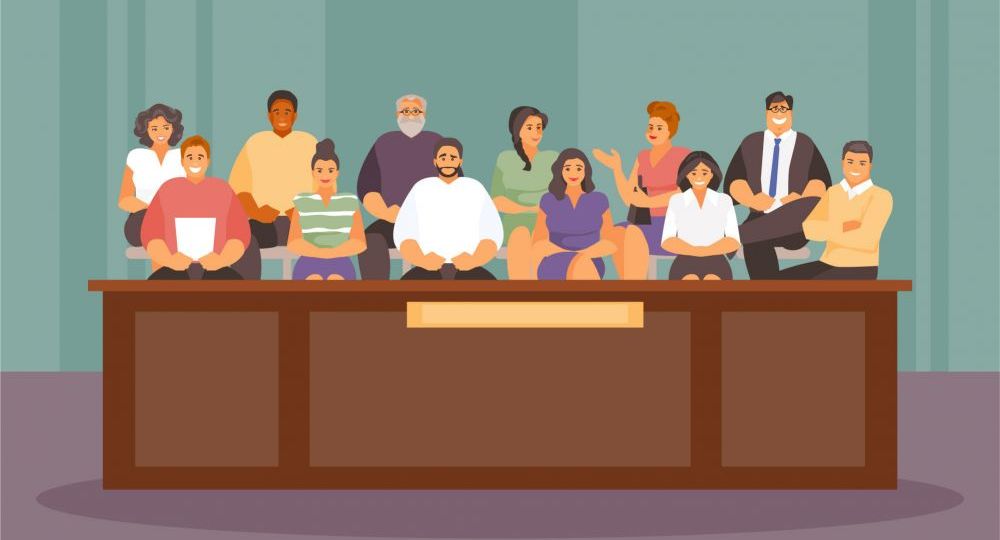
Without much fanfare, the Justices of the Massachusetts Supreme Judicial Court instituted jury instructions regarding implicit bias. Judges are now delivering these instructions to everyone serving on juries in Massachusetts civil and criminal trials. Over time, the jury instructions will expose large numbers of Massachusetts residents to strategies for making impartial, fair decisions. Business leaders thinking about bias in their own institutions might find it helpful to hear about the court system’s effort to counteract implicit bias in juries.
What is “implicit bias”?
The term bias refers to the internal, often unspoken preferences or associations that affect our behavior, feelings, thoughts and decisions. Biases are deeply ingrained associations that we make quickly and automatically. They operate through reflexive associations between things that we have frequently seen or heard paired together, such as peanut butter and jelly, or the sun and the moon.
The term “Implicit bias” was coined as a way of referring to the specific biases we have about people – both positive and negative — that are based on aspects of their personal identities, like their gender, race or religion, to name a few. In any given society, people learn these pairings through widespread exposure, beginning in early childhood. The result is implicit biases that take hold in people and in the society on a large scale. Because they function so automatically, implicit biases can impact a person’s decisions or actions without their awareness, and sometimes even in contradiction to their beliefs and values.
Implicit biases can have a profound impact on workplace behavior. For instance, implicit biases about gender, race, religion or other personal identities raise the risk of inaccurate assumptions about a job candidate. We might even disregard or overstate a job candidate’s qualifications as a result of bias, especially when we are pressed for time. That’s why implicit bias is an HR Law topic.
What did the Massachusetts court system do about implicit bias?
Model jury instructions are a standard way to address topics that arise frequently in trials. So the Supreme Judicial Court used this conventional strategy as a means to address bias, issuing jury instructions on the topic and requiring that the instructions be given to all jurors. This was part of the Massachusetts court system’s multi-faceted, multi-year effort to address racial inequity through innovations in the courts and legal system. The jury instructions are designed to reduce the likelihood that a juror’s decision making is impacted by bias.
The Massachusetts Model Jury Instructions on Implicit Bias, summarized.
- Slow down; do not rush to any decision. Hasty decisions are the most likely to reflect stereotypes or hidden biases.
- Keep an open mind. Avoid drawing conclusions until the end of the case.
- Listen closely to all of the witnesses and to fellow jurors.
- Consider witnesses as individuals, rather than as members of a particular group.
- Ask yourself, “Would I view matters differently if the people were from different groups, such as different racial, ethnic, or gender identity groups?
What can employers do about implicit bias?
If you’re looking to introduce the topic of implicit bias to your team, there are many places to begin. Check out the book The End of Bias, in which the journalist Jessica Nordell recounts a variety of bias-breaking efforts in businesses and not-for-profit entities, large and small. You can get strategy and language ideas from the anti-bias work that large companies – such as Google and Netflix—have engaged in and made public. Look at electronic resources that help employers make hiring decisions based on sound reasoning rather than bias. Software can withhold a job candidate’s personal identifiers, or re-write job descriptions for gender neutrality. Another good resource is Vernā Myers, a longstanding thought leader in this area, who makes online training courses available at www.vernamyers.com.
Trainers, DEI consultants, HR professionals and HR lawyers have experience, tools, ideas and knowledge about limiting the impact of implicit bias in businesses and workplaces. HR lawyers can help you stay on the right side of the law while pursuing this important goal.

